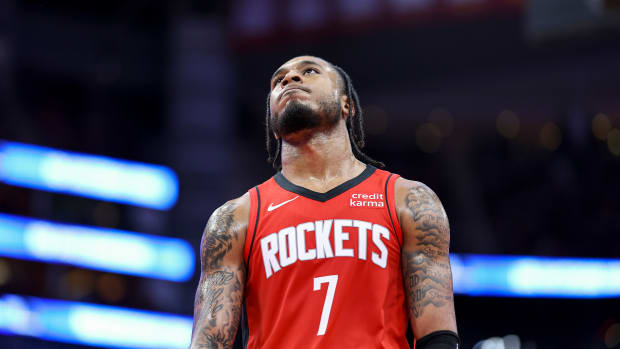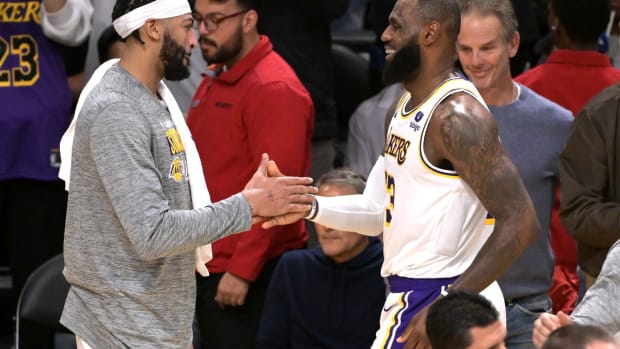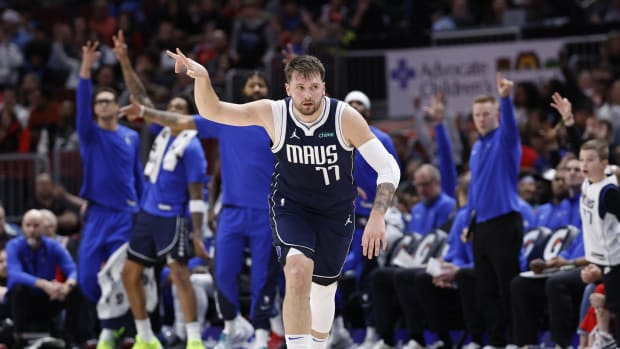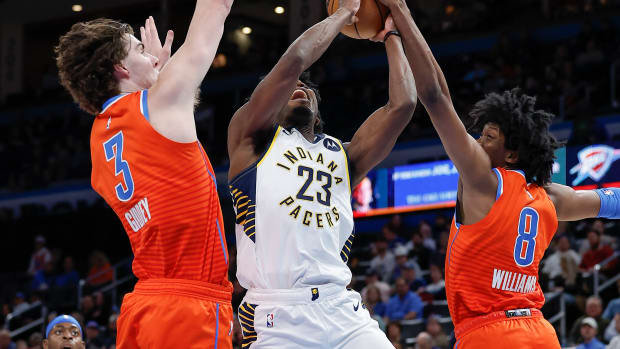Analyzing Why James Harden Won Paparazzi Assault Trial
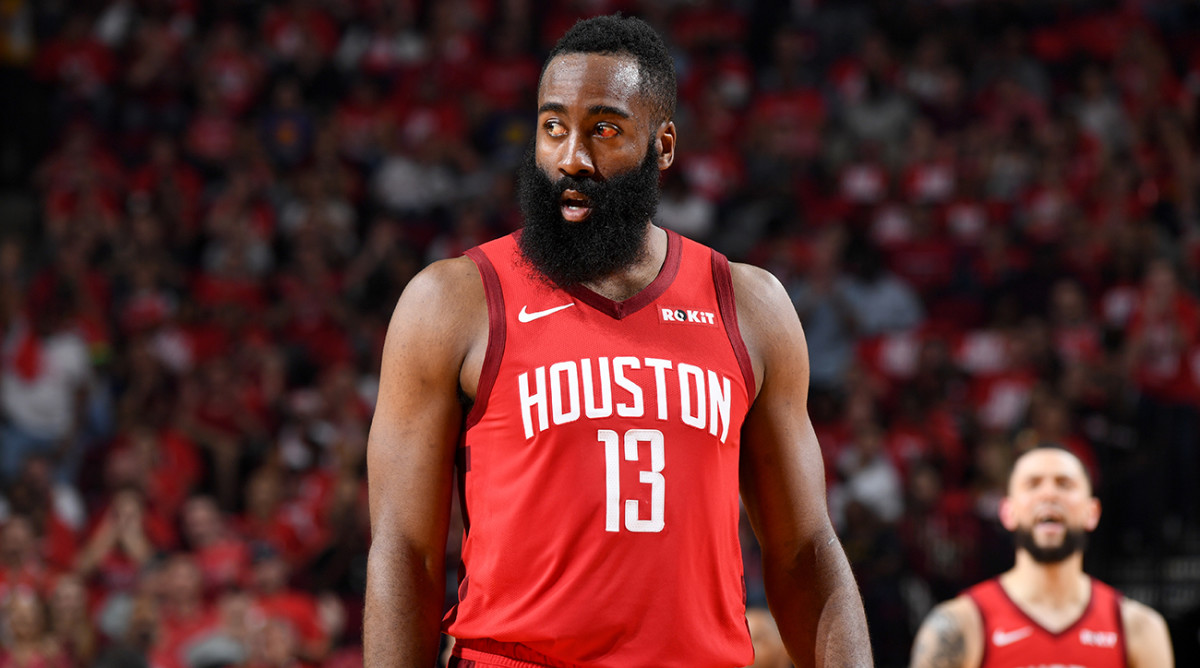
James Harden has been many things since the Oklahoma City Thunder drafted the former Arizona State star third overall in the 2009 NBA draft.
Most Valuable Player. Sixth Man of the Year. Assists leader. Win share leader. Minutes leader. Two-time scoring champ. Three-time points leader. Six-time NBA All Team. Seven-time All Star. One of the five best players in his generation. Future Hall of Famer. The Beard.
You can add successful defendant in a jury trial.
A jury in Los Angeles Superior Court recently found the Houston Rockets star not liable in a negligence, assault and battery case. The trial, which took place during the first week of July, stemmed from a lawsuit filed in July 2017 by David Flores. Flores is a Los Angeles-based photographer who insisted that Harden “angrily smacked” him a year earlier.
The alleged smacking occurred at about 2 a.m. on Friday, May 13, 2016, two weeks after the Golden State Warriors had bounced the Rockets from the first round of the playoffs. Harden, a Texas resident and Los Angeles native, was leaving a lounge in Hollywood when Flores says he approached Harden to conduct a video interview of him on his cell phone camera. TMZ reports that as Flores neared Harden, he asked him about his views on Donald Trump. At that time, Trump was the presumptive Republican nominee for President.
Flores maintains that Harden responded irritably to the question. As Flores tells it, Harden then abruptly hit Flores on the hand with which he was holding his cell phone. The hit was so hard, Flores claims, that it broke one of his fingers.
Flores insists that he suffered “serious physical damage . . . extreme mental anguish and physical pain . . .[and] permanent disability.” In light of these alleged injuries, Flores contends that he sought out various medical services and treatments. He also maintains that he’ll have future health care needs attributable to the incident. Further, Flores says that the injuries rendered him unable to work for several weeks, which led to a loss of earnings.
Flores hired attorneys from William F. Green & Associates in Newport Beach to represent him. They drafted a complaint which contained several claims. They included: negligence, which asserted that Harden owed a duty to Flores and that, through unreasonable contact, Harden caused injury to Flores; assault, an allegation that Harden caused Flores to suffer apprehension of immediate harmful and offensive contact; and battery, a depiction of Harden as intentionally making harmful and offensive contact which Flores did not consent.
Harden retained attorneys from Houston-based law firm Rusty Hardin & Associates (led by well-known sports litigator Rusty Hardin, whose clients have included NBA players Scottie Pippen, Steve Francis and Calvin Murphy ) and the California-based law firm Bienert | Katzman, attorneys from whom successfully tried the case in Los Angeles. As explained below, Harden’s legal team described the lawsuit as built on lies, exaggerations and untenable legal theories.
Harden dismisses Flores as an opportunist who is trying to make a quick buck
Even after two years of suing such a high-profile person as Harden, not much is publicly known about Flores. He does not appear to be a member of the media or employed by any news agency. He is portrayed in litigation documents as a celebrity photographer—an occupation sometimes called the “paparazzi.” These are freelance photographers who have been known to use stalker-like methods to track down celebrities, occasionally in unsuspecting places, and then take candid photos or videos of them. Those recordings can then be sold to tabloid publications. The First Amendment to some extent protects these journalistic practices, though in certain instances they can run afoul of privacy and anti-harassment laws.
Attorneys for Harden offer a more sinister account of Flores. In court filings obtained by Sports Illustrated, the attorneys describe Flores as a “convicted felon” who harassed Harden. Further, at the time of the incident, Harden’s attorneys say that Flores “was unemployed and intermittently homeless.” They also derisively depict Flores as not even real paparazzi, but instead “self-proclaimed paparazzi.”
The attorneys contend that Flores intended to invade the personal space of a celebrity in hopes of obtaining sellable content. This type of invasive media activity has been known to provoke celebrities into launching physical attacks. There is no shortage of famous people who have lost their tempers with aggressive paparazzi. They include Alec Baldwin, Brittany Spears and Kanye West. In some instances, celebrities are later charged with crimes and/or sued by their alleged victims, that is, the paparazzi who initiated the interaction.
This is why Harden’s attorneys have lambasted the case as a “quintessential shake down lawsuit.” In one filing to Los Angeles Superior Court Judge Peter Mirich (the presiding judge), Harden’s attorneys go so far as to describe Flores as “out the night of the alleged incident looking to make some money off any person of notoriety he might come across. Unfortunately for Mr. Harden, he was that person.”
Given that Harden presumably didn’t expect a stranger to walk up to him at 2 a.m. with his cell phone positioned as a camera while asking random questions about a presidential candidate, it’s not surprising that Harden didn’t respond especially well. Most people would probably not welcome that kind of encounter. Yet whether Harden went a step too far by allegedly making physical contact was the key legal question for the trial.
Harden’s attorneys attempt to debunk the basis of the case against their client
Through court filings written by his attorneys, Harden denies everything. He denies that he in acted in any way unreasonably or that he caused Flores’s alleged injuries. Harden also takes aim at those alleged injuries, arguing that Flores hasn’t proved them, let alone that Harden may have caused them. In fact, Harden insists that Flores only established that he suffered, at most, $314 in damages plausibly related to the incident.
Harden’s attorneys also contend that Flores failed to take the necessary steps under California law to prove that Harden could have caused his injuries. Specifically, they charge that while Flores intended to call to the witness stand medical doctor witnesses who treated him, he failed to retain an expert who would be able to testify as to how Flores suffered his alleged harm. They also assert that Flores failed to retain an expert who could verify that he suffered the kind of psychological trauma he alleges.
This was a problematic arrangement for Flores, since under California law, causation in personal injury litigation must be “founded upon expert testimony” and “must be proven within a reasonable medical probability based upon competent expert testimony.” This means that jurors needed to hear educated views about why Flores suffered his alleged injuries and whether those injuries are valid. The views of Flores or of any lay person would not be enough to prove that Harden is responsible for injuring Flores.
Harden’s attorneys also noted concerns with the evidence upon which Flores relied. In May, those attorneys filed a motion to Superior Court Judge Laura Seigle in which they noted that Flores had provided to Harden 206 pages of medical records, two photographs, one video excerpt, and a two-page incident report. The filing demanded that Flores not be allowed to introduce any additional evidence “at the last minute” and past the deadline stipulated by the pretrial discovery process. The reference to a “video excerpt” of the incident was noteworthy, since the court ruled that jurors would be able to watch the except. The quality and content of the video is unknown, but it reportedly had been edited or manipulated. Whatever was shown on the video clearly did not convince jurors that Harden was responsible.
The filings also reveal that despite the fact that the case was pending for two years, Flores—according to Harden’s attorneys—surprisingly never attempted to depose Harden or any other witness. That is, Harden was not required to testify under oath about the incident.
This became a relevant fact when Flores attempted to delay the start of the trial. Harden’s attorneys argued that Flores failing to seek to question Harden, and failing to seek an extension of pretrial discovery, indicated that Flores had “been ready for trial for a long time.” Harden’s attorneys also noted that, as an out-of-state resident who was not deposed, Harden could not be compelled to attend the trial and thus could not be compelled to testify at the trial. There is no record of Harden testifying at the trial.
Harden’s decision to not settle speaks volumes
In all likelihood, Harden could have easily settled the case and paid off Flores. Just consider the vastness of the 29-year-old’s wealth. According to Basketball Reference, Harden has earned $148 million over his 10 seasons in the NBA. He is also due to be paid $123 million over the next three seasons. Harden also has a player option for the ‘22-‘23 season worth $47 million. Spotracprojects that he will have earned $318 million in NBA contracts at the conclusion of the ’22-’23 season. Harden will be 33 years old then and, though he’ll likely be past his prime, he’ll presumably able to play several more seasons. Harden has also signed an endorsement deal with Adidas that is reportedly worth $200 million, as well as lucrative deals with Electronic Arts, State Farm and BodyArmor.
Harden could have offered Flores a sum of money that would have almost certainly convinced the photographer to drop his case. A payment worth hundreds of thousands of dollars would not have had any meaningful impact on Harden’s life. Further, attorneys sometimes advise clients who are both wealthy and famous to eliminate lawsuits or threats of lawsuits by paying off the person who is accusing them of wrongdoing. That pay off can provide closure and eliminate a source of stress or nuisance.
Harden viewed the situation differently. He refused to pay a man who he was sure was trying to exploit him. Harden opted to litigate, a choice which meant that he agreed to spend some of his limited time and energy speaking with attorneys about a case where the plaintiff depicts him as angry and violent.
By litigating, Harden also opened the door to other interested in parties—including law enforcement, the NBA and sponsors—to take a closer look. That was a risk Harden was willing to take.
To that end, while Harden was not charged with a crime for the incident, California’s criminal statute of limitations generally permit that he could be charged with a felony within three years of an incident or charged with a misdemeanor within one year. Had the civil litigation with Flores revealed that Harden was violent or aggressive, the risk of being charged would have risen.
Also, Harden (and by extension the Rockets) had to be mindful of NBA player conduct policies, specifically Article 35 of the NBA constitution. Article 35 authorizes NBA commissioner Adam Silver to suspend players for any “conduct that does not conform to standards of morality or fair play, that does not comply at all times with all federal, state, and local laws, or that is prejudicial or detrimental to the NBA.” Article 35 imposes no limit on length of suspension. If evidence surfaced that painted Harden in a negative light, Harden could have faced league punishment.
Harden’s reputation is critical to his endorsement deals. Endorsement contracts with major companies almost always contain “morals clauses.” These clauses allow the company to suspend or terminate its obligation to pay the endorsing athlete when the athlete generates public controversy. If the litigation gave the companies with whom Harden has signed endorsement deals reason to worry about his character, his endorsement earnings could have been impacted.
But none of those things happened. Harden had the confidence and, he might argue, sheer determination to put justice and righteousness ahead of his own convenience. He won the trial. Flores could appeal, but at least for now, Harden’s move has paid off.
Harden is taking a similar course with a Texas lawsuit brought against him by Moses Malone Jr., the son of the late Basketball Hall of Famer Moses Malone. A couple of years ago, Malone sued a group of persons, including Harden, after being beaten up outside a Houston Strip Club on June 25, 2016. Although Harden was not present at the incident, Malone contends that Harden played a facilitating role. The details of that case are contained in a separate Sports Illustrated legal article. According to court records obtained by Sports Illustrated, a two-week trial is currently scheduled before Harris County District Judge Mike Engelhart on August 19.
Once again, Harden does not seem interested in settling a civil litigation.
Harden, it should be noted, is not the first NBA player to be willing to go to trial in a civil matter. In 2006, Allen Iverson went to trial after being sued for $20 million over an alleged bar fight involving Iverson’s body guard. Iverson was represented by well-known sports litigator Alan Milstein. The case ended in an imposition of liability, but in a relatively favorable light to Iverson. He and his body guard were ordered to pay $260,000, a far cry from the $20 million sought.
Michael McCann is SI’s Legal Analyst. He is also an attorney and Director of the Sports and Entertainment Law Institute at the University of New Hampshire Franklin Pierce School of Law.































